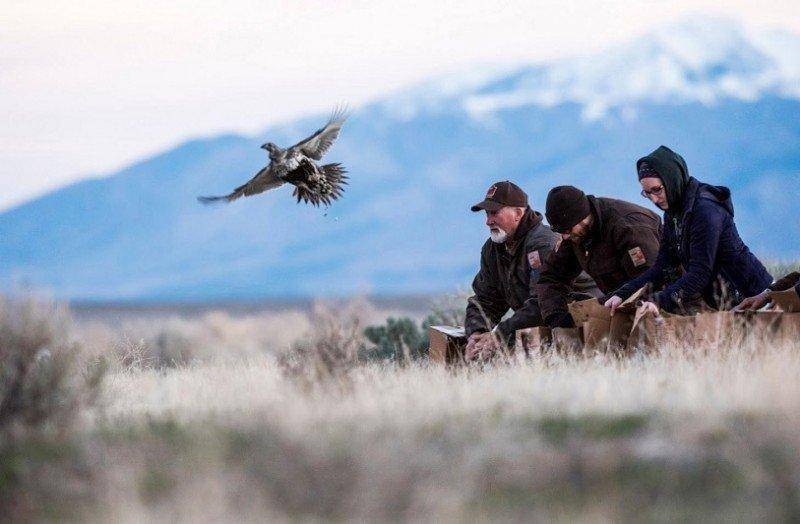DWR Press Release
Birds will bolster current population
Vernon — With only one exception, greater sage grouse are doing well in Utah. And the one area where the birds are struggling—Tooele County—received some much-needed help on March 10.
At 6:45 a.m. that morning, 11 greater sage grouse—seven males and four females—were released near a breeding area called a lek. The lek is southwest of Vernon.
As soon as biologists opened the doors to the transport boxes, the newly arrived sage grouse—captured in western Box Elder County a few hours earlier—flew out of the boxes and onto their new home.
Jason Robinson, upland game coordinator for the Division of Wildlife Resources, says the birds that were released on March 10 will bolster the local sage grouse population as biologists continue to improve sage grouse habitat in the area.
“Once a population of greater sage grouse disappears,” Robinson says, “so does the chance that grouse will ever live in that area again.”
Robinson says sage grouse that are moved from one area to another usually don’t survive if resident sage grouse aren’t already present in the area where the birds are released. “However, the likelihood of success is high if resident birds are still present,” he says. “The resident birds help the new birds find the habitat they need for food and cover.”
Robinson says the sage grouse released on March 10 should mix with other sage grouse, and breed and raise young this spring.
The next day, March 11, eight more greater sage grouse—captured in Box Elder County the night before—were also released near the lek. The second group included one male and seven females, bringing the total number of birds released to 19.
Biologists want to release a total of 40 greater sage grouse—10 males and 30 females—in Tooele County this spring. The final trapping effort will happen in early April, when biologists trap greater sage grouse on Parker Mountain in south-central Utah.
Struggles in the county
So why are sage grouse struggling in Tooele County while populations across the rest of Utah are doing well? “Unfortunately,” Robinson says, “this population has suffered from the old adage ‘death by a thousand cuts.’ Overtime, several things have happened that have led to the current situation.”
Those factors range from drought and increased off-highway vehicle use to altered water distribution and invasive weeds. Another is the continued spread of pinion and juniper trees. All these factors have reduced the habitat that’s available to the sage grouse.
“Sagebrush not only provides sage grouse with food,” Robinson says, “it also gives the adult birds the cover they and their young need to hide from predators. You can’t have sage grouse without lots of sagebrush.”
Robinson says work to reduce pinion and juniper trees, and increase sagebrush, have done much to help sage grouse in the area, especially over the past decade. Many more habitat projects are scheduled for the future.
Robinson says cooperation between government agencies and private landowners has been the key in keeping sage grouse in the area from declining more. “Some of the best habitat in the area is found on private property,” he says. “The landowners in the area have been very cooperative; they’ve been fantastic to work with.”

